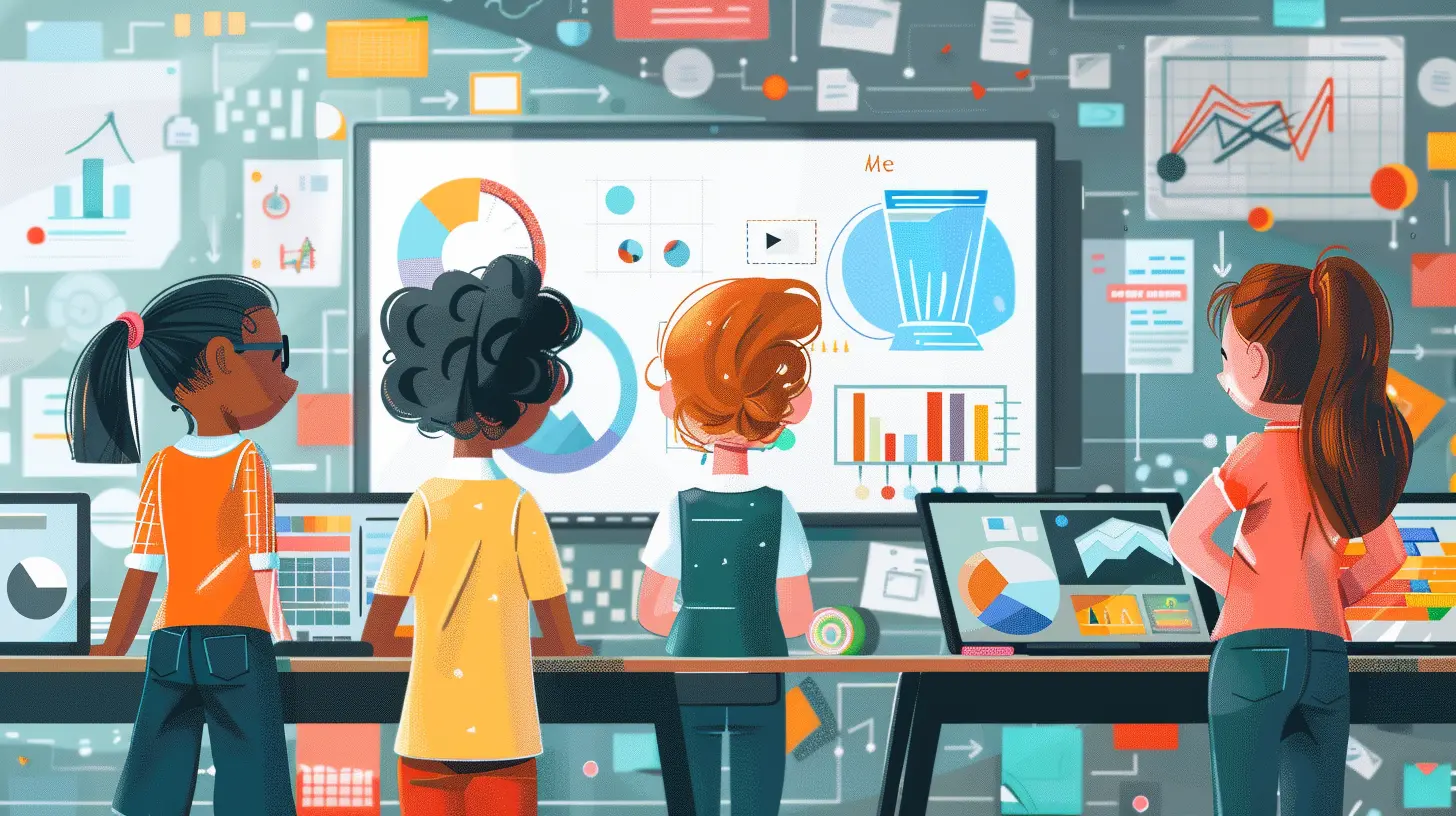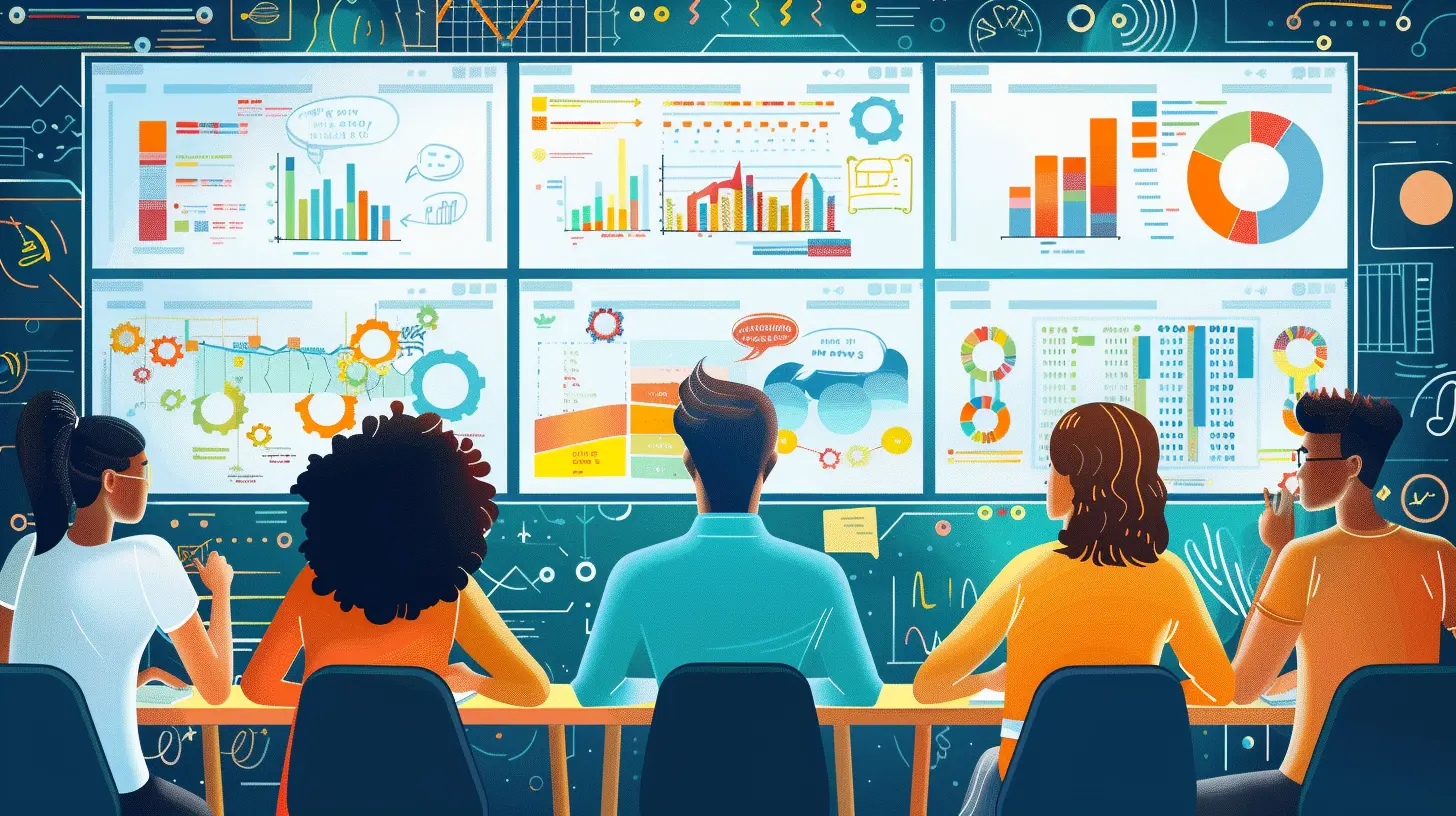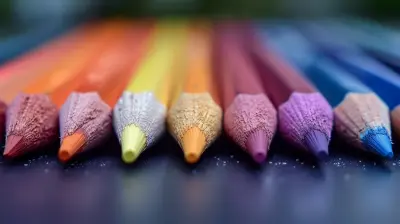3 June 2025
Project-based learning (PBL) has rapidly become one of the most engaging and effective methods of teaching. It allows students to explore real-world problems and challenges, encouraging critical thinking, collaboration, and creativity. However, assessing PBL is no walk in the park. It’s not just about checking off a list of completed tasks or grading a final product. Instead, you need to dive deeper, looking at the learning process, the skills developed, and the overall growth of the student.
So, how exactly do you assess project-based learning effectively? What strategies can you use to ensure you're supporting student growth while keeping track of their progress? Let’s explore some tried-and-true strategies that can help you navigate the complexities of PBL assessment.

Why Is Assessing Project-Based Learning So Important?
Before we dive into the strategies, let’s first understand why assessing PBL is such a big deal. Why not just let students finish their projects and call it a day?Well, assessment is more than giving a grade. It’s about measuring learning, offering feedback, and providing an opportunity for reflection. Without proper assessment, students might not fully understand what they’ve learned, and teachers might miss the chance to identify areas for improvement.
In traditional learning, assessment is often focused on the final product—like a test score or an essay grade. But in project-based learning, the process is just as important as the final outcome. You want to evaluate not just what the students created, but how they got there.
So, how do you do that? Let’s break it down.

1. Set Clear Learning Objectives
Imagine embarking on a road trip without a map or destination. You might end up somewhere interesting, but you’ll probably get lost, too. The same goes for PBL. Without clear objectives, students might work hard but not achieve the intended learning outcomes.How to Do It:
Before the project even begins, establish clear learning goals. What skills should the students develop? What concepts should they understand by the end of the project? Break these down into smaller, achievable milestones.For example, if your students are working on a project about climate change, your learning objectives might include:
- Understanding the causes and effects of climate change.
- Developing research skills.
- Practicing collaboration and communication within a group.
These objectives will guide not only the students but also your assessment process.
Why It Works:
With clear objectives, you’re better equipped to measure progress and ensure that students stay on track. Plus, students will have a better understanding of what’s expected, making the project more meaningful and focused.
2. Use Formative Assessments Throughout the Project
One of the biggest mistakes teachers make with PBL is waiting until the end of the project to assess students. But here’s the thing: you don’t have to wait until the final presentation to start evaluating their work. In fact, formative assessments are a great way to check in on students as they work through their projects.How to Do It:
Formative assessments can take many forms, from informal check-ins to more structured activities like peer reviews or self-reflections. The key is to assess during the learning process, not just at the end.For example, you could:
- Hold one-on-one conferences to discuss progress.
- Have students submit progress reports or reflections.
- Use rubrics to evaluate specific skills, such as collaboration or problem-solving.
Why It Works:
Formative assessments allow you to offer timely feedback and make adjustments as needed. They also help students reflect on their own progress and identify areas where they may need more support. It’s like getting a GPS update halfway through that road trip—you know if you’re heading in the right direction or if you need to reroute.
3. Incorporate Peer and Self-Assessments
Here’s a fun fact: students can learn just as much (if not more) from evaluating themselves and their peers as they do from teacher feedback. Peer and self-assessments are powerful tools in PBL because they encourage reflection, critical thinking, and a sense of ownership over the learning process.How to Do It:
- Peer Assessment: Have students evaluate each other’s work. This could be through structured rubrics, where they assess teamwork, contribution, or creativity. It’s important to teach students how to give constructive feedback, so it’s helpful to model this beforehand.- Self-Assessment: Ask students to evaluate their own performance. What did they do well? What could they improve on? This can be done through reflective journals, checklists, or rubrics.
Why It Works:
When students assess themselves or their peers, they gain insight into their strengths and areas for improvement. It also fosters a more collaborative environment, where feedback isn’t just top-down but involves the whole group.Self-assessment helps students become more self-aware and encourages them to take responsibility for their own learning. It’s like looking in the mirror and realizing what you need to tweak before you head out the door—it’s not about judgment, but about self-improvement.
4. Use Rubrics for Transparent and Consistent Evaluation
Rubrics are your best friend when it comes to assessing PBL. They provide a clear, consistent way to evaluate both the process and the product. Plus, they let students know exactly what’s expected of them, so there are no surprises when it comes time to assess their work.How to Do It:
Design a rubric that breaks down the different components of the project, such as:- Research and content knowledge.
- Creativity and innovation.
- Collaboration and teamwork.
- Presentation and communication skills.
Each category should have descriptions of what constitutes excellent, good, fair, and poor performance. Share the rubric with students at the beginning of the project, so they know what they’ll be evaluated on.
Why It Works:
Rubrics make the grading process more transparent and objective. They also help students understand what’s expected of them and how they can succeed. Think of a rubric like a recipe—it gives you all the ingredients and steps for success, so there’s no guessing involved.5. Evaluate Both the Process and the Product
In traditional assessments, the focus is often on the final product—whether it’s a test, an essay, or a project. But with PBL, the process is just as important as the final outcome. After all, the journey is where much of the learning happens.How to Do It:
- Process Evaluation: Look at how students are working throughout the project. Are they collaborating effectively? Are they meeting deadlines? Are they showing initiative and problem-solving skills?- Product Evaluation: Then, assess the final product based on the criteria you’ve established (e.g., creativity, content knowledge, presentation skills).
You can use rubrics for both the process and the product to ensure a balanced evaluation.
Why It Works:
By assessing both the process and the final product, you’re giving students credit for their hard work and growth throughout the project—not just the end result. It’s like judging a baking competition: you wouldn’t just taste the cake; you’d also pay attention to how it was made, the techniques used, and the effort behind it.6. Encourage Reflection
Reflection is a critical part of the PBL process. It’s not enough for students to complete a project—they need to think about what they learned, how they approached the task, and what they could do differently next time. Reflection helps students deepen their understanding and develop metacognitive skills.How to Do It:
At the end of the project, ask students to reflect on their experience. You can guide them with questions like:- What did you learn from this project?
- What challenges did you face, and how did you overcome them?
- How did you contribute to the team?
- What would you do differently in the future?
Students can write their reflections in a journal, create a video reflection, or share their thoughts in a group discussion.
Why It Works:
Reflection encourages students to think critically about their own learning and growth. It’s like looking back on a journey—you can see the twists and turns, the obstacles you overcame, and the lessons you learned along the way.7. Balance Individual and Group Assessment
One of the challenges of PBL is that students often work in groups, which can make it tricky to assess individual contributions. While teamwork is an important part of PBL, it’s also crucial to evaluate individual performance to ensure that every student is learning and contributing.How to Do It:
- Group Assessment: Evaluate the group’s overall product and how well they worked together. Consider factors like teamwork, communication, and the quality of the final product.- Individual Assessment: Use self-assessments, peer assessments, and observations to evaluate each student’s individual contribution. You can also assess individual learning through quizzes, reflections, or one-on-one conferences.
Why It Works:
Balancing group and individual assessments ensures that students are held accountable for their own learning while also recognizing the importance of collaboration. It’s like being part of a sports team—you win or lose as a team, but individual effort still matters.Final Thoughts
Assessing project-based learning requires more than just grading a final product. It’s about evaluating the process, providing ongoing feedback, and encouraging reflection and growth. By using a combination of formative assessments, rubrics, peer assessments, and self-reflections, you can create a more comprehensive and meaningful evaluation system.Remember, PBL assessment is not about perfection—it’s about progress. It’s about helping students develop critical skills, think creatively, and work collaboratively. And when done right, it can turn a simple project into a powerful learning experience.








Cecilia Warner
Great insights! I love how project-based learning fosters creativity and critical thinking. These assessment strategies will definitely help educators evaluate student progress while keeping the learning experience engaging and meaningful. Excited to implement them in my classroom!
November 16, 2025 at 5:39 AM